For kids, play is more than just fun—it’s how they learn, grow, and express who they are. Sports, in particular, give children a chance to move freely, make friends, and build confidence. But for children with limb differences, joining in can sometimes feel harder, especially if their prosthetic doesn’t move the way they need it to.
The good news is that prosthetic technology has come a long way. Today, there are solutions designed not just for walking or writing but for running, catching, climbing, and even swimming. These prosthetics are made to move with the child, not hold them back. And when chosen carefully, they can help kids enjoy sports as fully as anyone else.
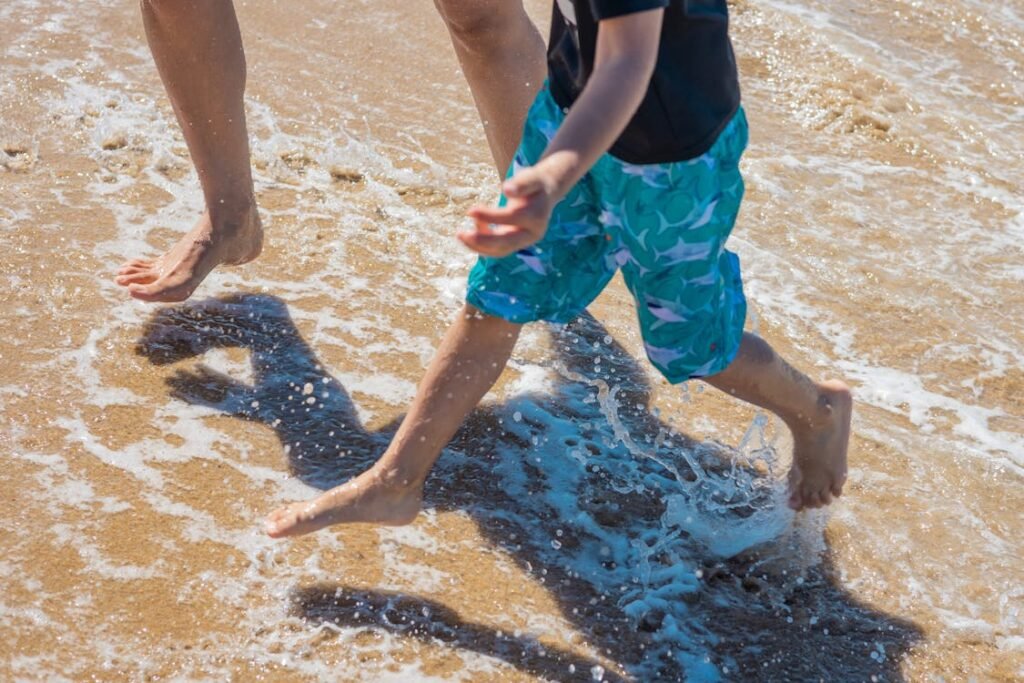
Understanding Movement Needs in Active Children
What Makes Sports Different from Everyday Activity
When a child runs on the playground or swings a bat, their body is doing something very different than walking in a classroom or picking up a pencil. Sports ask for fast movement, quick balance changes, and strong coordination between arms and legs.
For a prosthetic to work well during sports, it needs to move with the child, not slow them down or feel uncomfortable.
Many everyday prosthetics are designed to help with regular tasks like holding a spoon or walking short distances. But in sports, the pressure on joints is higher, movements are faster, and reactions need to be sharper.
That’s why choosing the right prosthetic for play isn’t just about getting a smaller size—it’s about choosing a design made for action.
Kids also move differently than adults. Their bones are still growing, their muscles are still learning, and they’re constantly testing new ways to move.
So a sports-friendly prosthetic needs to allow for flexibility, but also be strong and safe. It needs to support not just performance, but fun.
The Emotional Side of Sports Participation
Playing sports isn’t just about physical health. It also brings joy, pride, and a feeling of being part of something. When a child with a limb difference joins a game or takes part in school sports day, it boosts their confidence. It helps them feel like any other kid.
But that feeling only lasts if their prosthetic lets them take part fully. If the device is heavy, hard to control, or falls off too easily, it can lead to frustration.
That’s why comfort, fit, and ease of movement matter just as much as strength. When children feel supported, they’re more likely to try, to practice, and to enjoy.
Support from parents, teachers, and friends plays a big role too. Encouragement can go a long way in helping a child feel ready to join in.
But nothing beats the feeling of being able to move freely. A well-fitted prosthetic can turn nervousness into excitement.
Many families also ask if it’s okay for their child to switch between different prosthetics—one for daily use and one for play. The answer is yes, and in fact, it often works best that way.
A lighter everyday device might not be enough for sports, but a sport-specific prosthetic can take more impact, help with grip or stability, and hold up better during action.
Therapists and prosthetists can help guide families through these choices. Some children may do well with just a few adjustments to their current prosthetic, while others may need a custom setup.
What matters most is choosing based on the child’s activity level, interests, and comfort—not just appearance or features.

Choosing the Right Prosthetic for Sports and Play
Matching the Prosthetic to the Sport
Every sport uses the body in a different way. A child who wants to run will need different support than one who loves swimming or climbing.
That’s why it’s important to match the prosthetic not just to the child’s size and age, but also to what kind of movement they enjoy.
For kids who enjoy running or jumping, the most important thing is how well the leg prosthetic handles pressure and balance. It needs to be strong but also flexible enough to allow smooth steps.
Some prosthetics are designed with special curved feet that help return energy with each step, giving the child a more natural run. These are great for track, field games, or even playing tag with friends.
Children who love sports like basketball or football need more support for side-to-side movement, quick stops, and sudden changes in direction.
That means the socket (the part that connects the limb to the prosthetic) must fit snugly so it doesn’t slip, and the lower part must stay strong and steady on different surfaces.
For those who love swimming, waterproof materials are key. A standard prosthetic may get damaged in water or become slippery.
There are water-friendly options made just for the pool or beach that are lighter, don’t absorb water, and dry quickly.
Upper-limb prosthetics for sports need to allow motion and grip. A child who wants to play baseball may need to hold a bat firmly. One who enjoys climbing might want more wrist movement or flexible fingers.
Some prosthetic hands are designed with strong rubber grips or locking mechanisms so the child can hold sports gear safely without worrying it will fall.
Whatever the sport, the right fit makes a huge difference. If the prosthetic feels too tight or too loose, it may cause pain or bruising.
And that can lead to a child giving up on the activity altogether. That’s why follow-ups and adjustments are just as important as the first fitting.
Involving the Child in the Choice
Children know their own bodies better than we sometimes realize. They can tell you when something doesn’t feel right, when a part feels heavy, or when it helps them move more easily.
So it’s important to involve them in choosing their prosthetic—especially if it’s for something as personal as sports.
Let them try it on. Let them walk, jump, or throw with it if possible. Ask how it feels. Give them space to explore and time to build trust with the device. This helps the child feel in control and more likely to use the prosthetic with confidence.
Even the look of the prosthetic matters. Some children feel more excited about using a device that comes in their favorite color or has a cool design. This isn’t just about looks—it’s about identity and pride.
A prosthetic that feels like “theirs” becomes a part of how they express who they are, especially when playing with others.
Talk to the prosthetist about the child’s habits and play routines. Do they play rough? Do they switch between activities often? Are they more active in the evenings or weekends?
These little details help choose parts and designs that work in real life—not just on paper.
The goal isn’t perfection. It’s comfort, confidence, and movement. The right prosthetic gives the child a chance to enjoy what they love, to fall down and get back up, and to feel strong in their own way.
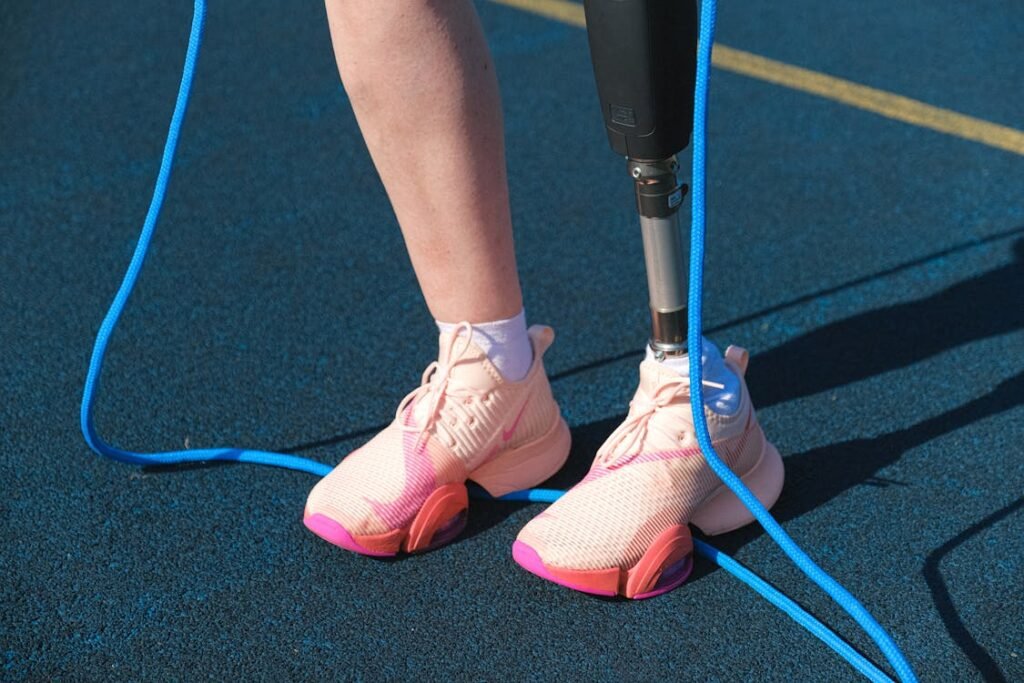
Building Skills and Strength Through Play
Why Practice Matters More Than Perfection
When a child gets a new sports-friendly prosthetic, it can take some time before it feels natural. Just like learning to ride a bike or throw a ball, using a prosthetic during play is something they learn step by step.
Practice is not about being perfect—it’s about getting more comfortable, finding balance, and figuring out how the prosthetic moves with their body.
In the beginning, movements may feel strange. A running blade or a new grip might take time to get used to. Children may fall, feel tired faster, or even want to give up after the first try.
That’s okay. What helps most is a safe space to keep trying, a supportive adult who encourages without pressure, and enough time to build strength and skill at their own pace.
When children play regularly with their prosthetic, they naturally start building muscle, improving balance, and becoming more confident in their steps. This isn’t just physical growth—it also helps emotionally.
They feel less afraid to move, more willing to try something new, and proud of what they can do.
Parents and caregivers can support this by setting aside daily time for movement-based play. It doesn’t always have to be a sport.
Running around the yard, climbing small steps, throwing and catching, or even dancing around the house all help develop body control. Over time, these simple moments add up to better performance and less frustration during structured sports.
Prosthetists and therapists can help guide early practice. They can show children how to move safely, what to avoid, and how to stretch or warm up before active play.
Some may also recommend strength exercises or fun balance games that prepare the body for more intense sports.
Supporting Play at Home and in the Community
What happens outside the clinic is just as important as what happens during appointments. Children need to play in familiar places—their home, school, or neighborhood. That’s where their confidence really grows.
At home, families can make small changes to support play. For example, creating a clear, open space for movement can make running or jumping feel safer.
Using soft sports gear like foam balls or padded surfaces helps reduce the fear of falling or injury. Most importantly, allowing the child to lead—letting them choose the activity, speed, and timing—gives them the feeling of control.
In community spaces like parks or sports clubs, talking to coaches ahead of time helps too. Not every coach has worked with a child using a prosthetic before, but many are open to learning.
A short conversation about the child’s needs, comfort level, and prosthetic use can help the coach adapt games or give extra support.
Children also benefit from seeing others like them. Community groups, inclusive sports events, or school programs that welcome all abilities can offer friendship and role models.
When a child sees someone else using a prosthetic to run, swim, or play, it sends a strong message: “You can do it too.”
Support doesn’t have to be loud or dramatic. A nod of encouragement, a small cheer from the sidelines, or a simple “you did great” after practice can go a long way.
What matters most is that the child knows they’re seen not for what’s missing—but for all the ways they’re showing up, trying, and growing.
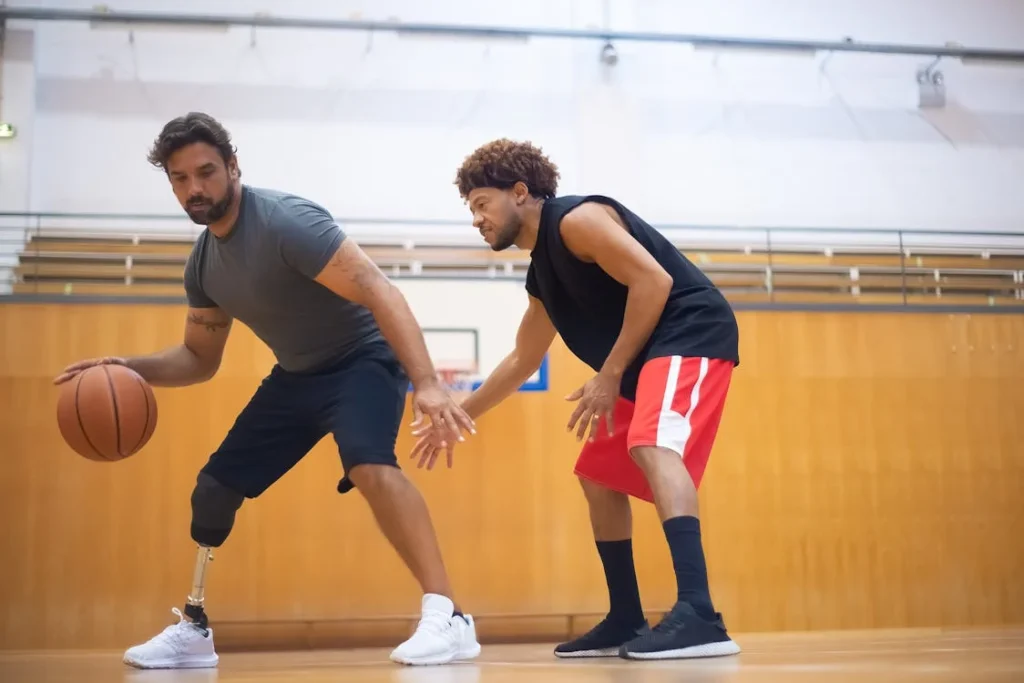
Working with Schools to Support Active Kids
Making Physical Education More Inclusive
For many children, school is where they first discover their love for sports. Physical education classes, games during recess, and after-school activities offer chances to move, explore, and compete.
But for kids who use prosthetics, these moments can also be filled with questions—Will I be able to keep up? What if I can’t do everything the others can? Will I be left out?
Schools can make a big difference by building a culture that welcomes and supports every child’s way of moving.
The goal isn’t to make children with prosthetics do everything exactly the same way—it’s to give them the chance to participate in a way that feels right for them.
Teachers and physical education staff should start by learning about the child’s prosthetic. Understanding what it’s designed to do, and what it might not support, helps them plan better.
Some children may need to warm up differently, take more breaks, or use a different technique for an activity. That’s okay. With small changes, most sports and games can be adapted so that everyone gets to play.
A child using a running blade might join a relay race with slightly modified hand-off zones. A child with an upper-limb prosthetic might need help tying a jersey or holding sports equipment. These adjustments are simple but important.
It’s also helpful when schools ask the child for input. They usually know what they can do and what feels hard. Some might want to be in the front line during a game; others may prefer to take a slower pace until they build confidence.
Listening to them and respecting their choices creates a safe space to grow.
Inclusive play doesn’t mean lowering expectations—it means finding different ways to meet them. When teachers cheer effort, not just speed or strength, children feel seen.
When peers are encouraged to be teammates instead of competitors, it builds a community that values everyone’s abilities.
Encouraging Participation Without Pressure
Not every child with a prosthetic wants to compete or be in the spotlight—and that’s completely fine. What matters is that they have the chance to participate if they want to.
The pressure to “prove” something can sometimes make children hold back instead of trying.
Schools can support this by offering a wide mix of activities, from team sports to solo challenges, from fast-paced games to calming movement exercises.
This gives every student a chance to find something they enjoy. Some may thrive in team games like football or basketball. Others might prefer yoga, cycling, or even dance.
It’s also helpful to have teachers and counselors check in with the child regularly—not to ask “why aren’t you joining in?” but to ask “what would help you feel more comfortable here?” This small shift in approach opens the door to trust and communication.
If a child ever feels left out, it’s important to act quickly and gently. Sometimes, all it takes is a classroom conversation about inclusion, or inviting the child to help lead a warm-up activity.
These small moments of recognition can change how the child sees themselves and their role in the group.
Over time, schools that take inclusion seriously find that their sports programs become better for everyone—not just children using prosthetics. The spirit of teamwork, fairness, and care spreads, and students grow into more compassionate, confident young people.
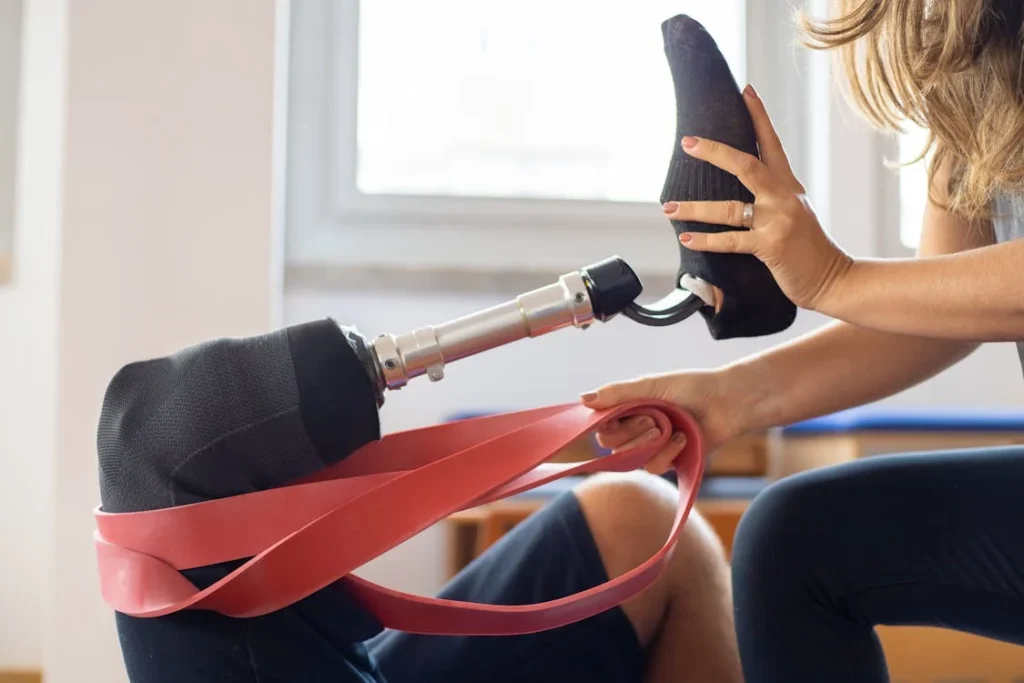
Understanding the Role of Rehabilitation in Sports Readiness
Preparing the Body for Active Play
Before a child with a prosthetic limb steps onto a sports field or joins a game, there’s often a journey that starts much earlier—with rehabilitation.
While people often think of rehab as something that only happens after surgery or injury, for children with prosthetics, it’s a key part of helping their bodies move safely and confidently during play.
Rehabilitation helps build strength, flexibility, and balance. These are all critical when playing sports, especially for children who are still learning how to move with a prosthetic.
Through targeted exercises, they learn how to shift weight, adjust posture, and coordinate their movements more naturally.
For example, a child using a leg prosthetic may need to work on hip and core strength to stay steady during quick sprints or side steps. A child with an upper-limb prosthetic might focus on shoulder and back muscles to help control their swing or throw.
These small adjustments help reduce the risk of falls or injury and make movement feel smoother.
Rehabilitation is not just about doing exercises—it’s about creating habits. Children learn how to warm up their bodies, how to take breaks when tired, and how to care for their limb and prosthetic after active play.
These lessons stay with them as they grow and become more independent in their activities.
Making Rehab Fun and Sport-Focused
One challenge in working with children is keeping them engaged. Long, repetitive exercises can feel boring or frustrating, especially if they don’t see a clear purpose. That’s why successful rehab programs often look a lot like play.
Games, obstacle courses, and creative challenges can all be used to build strength and improve control in a way that feels exciting rather than tiring.
Therapists often design sport-like drills that mimic the movements a child wants to do. If a child loves cricket, they might practice stepping and swinging in a controlled space before trying it outdoors.
If a child wants to swim, rehab may include exercises that build arm motion and leg coordination specific to water-based movement.
This kind of personalized approach not only keeps children motivated—it also shows them what’s possible.
When they see their own progress, they gain the confidence to try more and explore further. It shifts their mindset from “I can’t” to “Let me try.”
Modern rehabilitation also includes the use of virtual tools and digital games. These tools turn movement into something interactive, where children can track progress, beat personal bests, or explore new challenges in a playful setting.
This is especially helpful for kids who prefer indoor activities or need regular practice at home.
Rehabilitation doesn’t end once a child joins a sport. It continues as part of a balanced lifestyle. As children grow, their needs change. Their muscles develop, their sports interests shift, and their prosthetic may be adjusted or replaced.
A strong rehab routine helps them stay ready for each new stage—so they can keep doing what they love, safely and confidently.
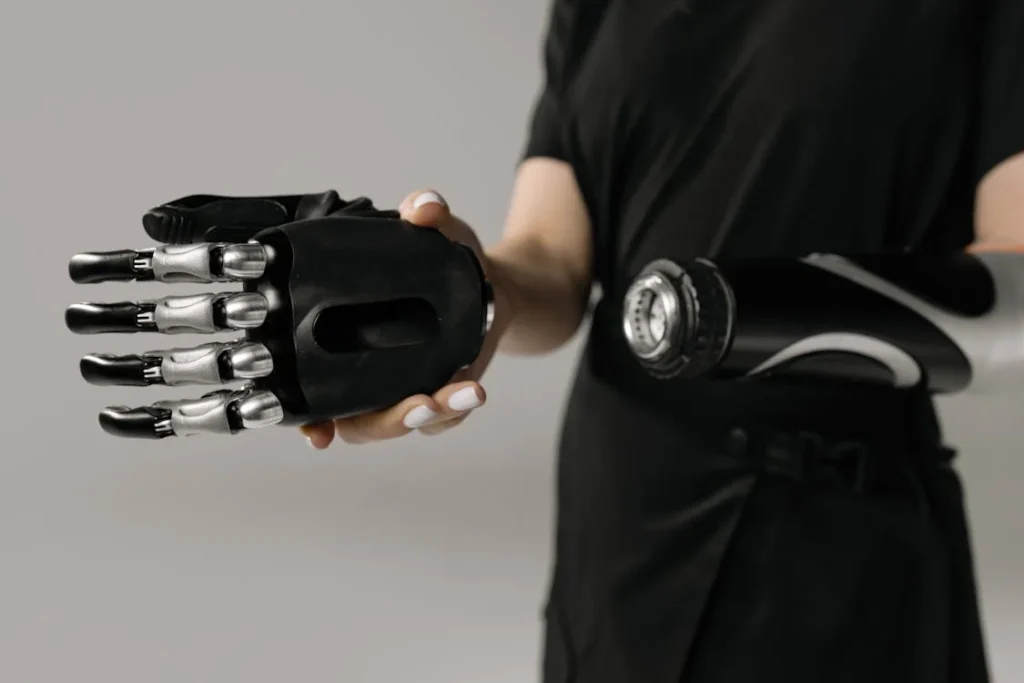
Designing Prosthetics That Grow with the Child
Why Growth-Friendly Design Matters
Children grow fast. Their bodies are always changing—height, weight, limb length, and muscle strength all shift quickly during childhood. For kids using prosthetics, this creates a special challenge.
A prosthetic that fits well today might feel too tight or too loose just a few months later. And when the fit isn’t right, it affects everything—from comfort and posture to confidence and safety during sports.
This is why growth-friendly prosthetic design is so important for active children. It’s not just about making smaller versions of adult devices. It means building prosthetics that can be adjusted over time without needing to be fully replaced every few months.
It also means thinking about how materials, parts, and socket shapes respond to the way a child moves.
For kids who love sports, the demands are even greater. A leg prosthetic used for running or jumping must be able to handle repeated impact. An arm prosthetic for throwing or climbing needs to move smoothly under pressure.
If a child is in a growth phase and their device no longer moves in sync with their body, it can lead to discomfort or even injury. That’s why flexible design—both in terms of structure and in terms of planning—is essential.
Planning Ahead for Physical Changes
One of the most helpful things families can do is work with a prosthetist who understands pediatric care and active lifestyles.
These professionals are trained to anticipate how a child’s body might change over time and design prosthetics that allow for size changes, alignment adjustments, and new parts to be added when needed.
Sometimes this involves using modular components that can be swapped out as the child grows. In other cases, it may mean building sockets that can be slightly adjusted for fit without needing a full remake.
The idea is to reduce disruption—so the child can keep playing, keep practicing, and keep feeling confident without long breaks or sudden discomfort.
It’s also helpful to have regular check-ins, even when everything seems to be going well. Children don’t always speak up about small changes, but they might start favoring one leg, sitting differently, or avoiding certain types of play.
These quiet signals often point to a prosthetic fit issue. A timely adjustment can keep things on track.
In sports, consistency is key. If a child has to keep changing how they move because their prosthetic doesn’t match their growth, it can affect their performance and increase the chance of injury.
But when the prosthetic is designed to evolve with them, it supports their natural development. It becomes not just a tool, but a trusted part of their active life.
Building for growth also means listening to the child. Their interests will shift. A kid who was once into swimming might suddenly want to try skateboarding.
A prosthetist who stays involved and flexible can help adapt the prosthetic setup to match new goals. This keeps the child engaged, curious, and excited to move.
Conclusion
Children with prosthetic limbs deserve the same freedom to move, play, and explore as any other child. With the right prosthetic solutions—designed for action, comfort, and growth—they can run, jump, climb, and compete without limits. What truly makes a difference is how well the prosthetic supports the child’s natural movement and evolving needs.
Choosing the best option means understanding the sport, the child’s goals, and how their body changes over time. It also means surrounding them with support—from families, schools, therapists, and communities that believe in their potential.
Sports aren’t just about winning. They’re about confidence, joy, and the simple thrill of being active. With thoughtful design, regular care, and a child-first approach, prosthetics can open that door wide. And when they do, the results are powerful—not just in performance, but in pride.



